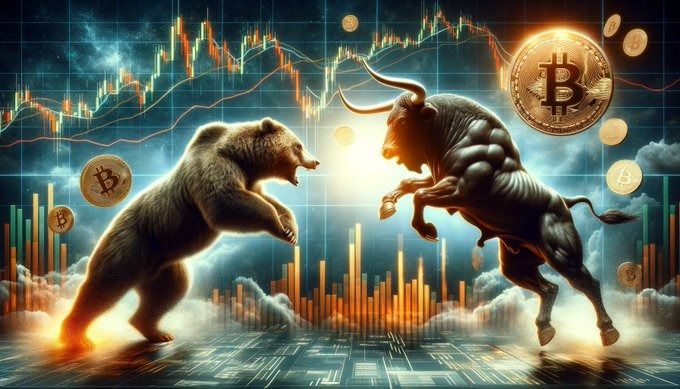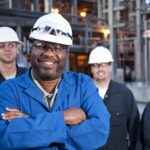The idea of the stock market consistently delivering around 8% annual returns may sound too good to be true. How can such growth sustain itself over decades?
Let’s break it down in simple terms and explore the mechanisms behind this phenomenon, along with the factors that could challenge its sustainability.
What Drives the Stock Market’s 8% Return?
The stock market’s historical average return of 8% per year is not a fluke. It’s the result of several interconnected factors:
Corporate Earnings Growth
At the heart of the stock market’s performance is the ability of companies to grow their earnings. Businesses innovate, expand, and become more efficient over time, generating higher profits. Investors, as part-owners of these businesses, benefit from this growth through rising stock prices and dividends.
Reinvestment of Profits
When companies reinvest profits into research, development, and expansion, they create new opportunities for future growth. This reinvestment boosts the value of the company, which is reflected in higher stock prices.
Inflation’s Role
Inflation increases the nominal value of goods and services, including stocks. While inflation averages around 3%, it boosts stock prices indirectly by increasing revenues and profits for companies over time.
Compounding Returns
The real magic of the stock market lies in compounding. Reinvested dividends and capital gains grow exponentially. For example, an 8% annual return means an investment doubles roughly every nine years, which adds up significantly over decades.

Are These Returns Sustainable?
While historical data supports the 8% average return, it doesn’t guarantee future performance. Here’s why sustainability is a complex question:
Economic Efficiency Gains
Over the past century, technological advancements have made economies significantly more efficient. A few farmers with modern machinery can produce what hundreds could not a century ago. Similarly, automation, AI, and renewable energy continue to reshape industries. This efficiency supports long-term growth.
Global Capital Inflows
The U.S. stock market attracts investments from around the world due to its stability and innovation. This influx of capital further drives stock valuations, contributing to sustained growth.
Shifting Valuations
In the modern economy, intangible assets like intellectual property, patents, and brand value hold immense importance. These assets allow companies to scale without the traditional constraints of physical resources, enabling higher valuations and returns.

Why Doesn’t the Economy Grow at the Same Rate?
If the stock market grows faster than the economy, where does the extra value come from? The discrepancy can be explained by the following:
Corporate Profit Margins
Corporations capture a larger share of economic output as profits, while wages and labor costs grow at a slower rate. This shift benefits shareholders disproportionately compared to the overall economy.
Market Speculation
Stock prices often reflect future earnings expectations rather than current economic output. Investors buy stocks based on anticipated profits, which can push valuations higher than GDP growth rates.
Globalization
Many U.S. companies generate significant revenues overseas, allowing them to grow faster than the domestic economy. For instance, multinational corporations benefit from higher growth rates in emerging markets.

Could This Growth Eventually Crash?
The question of sustainability also raises concerns about potential limits to growth:
Resource Limitations
Unlike financial growth, physical resources like land, water, and energy are finite. If these resources become scarce, they could limit economic and corporate expansion.
Market Corrections
Stock markets are not immune to corrections. Overvaluation, economic downturns, or geopolitical tensions can lead to sharp declines in returns, sometimes wiping out years of gains.
Wealth Concentration
As wealth compounds, the gap between the rich and the poor widens. If left unchecked, this inequality could lead to reduced consumer spending, economic stagnation, and lower corporate profits.

A Practical Perspective
To illustrate the power of compounding, let’s consider two examples:
A Gallon of Milk
In 1924, milk cost $0.35. Today, it costs around $3.50—a tenfold increase. If that $0.35 had been invested in the stock market instead, it could have grown to over $700 in the same period, assuming an 8% return.
A Billionaire’s Wealth
At 8% annual growth, $1 billion doubles every nine years. In 300 years, that billion could theoretically grow to trillions—far exceeding the current global GDP. This extreme example highlights the disconnect between financial growth and tangible value.

Conclusion
The stock market’s 8% annual return reflects the interplay of economic growth, corporate efficiency, and investor behavior. While this growth has proven sustainable over the past century, challenges like resource scarcity, market corrections, and wealth inequality could disrupt the trend.
However, as long as businesses innovate and economies adapt, the market is likely to remain a powerful wealth-building tool. For individual investors, understanding the forces behind these returns and diversifying investments can help navigate both the opportunities and risks ahead.







